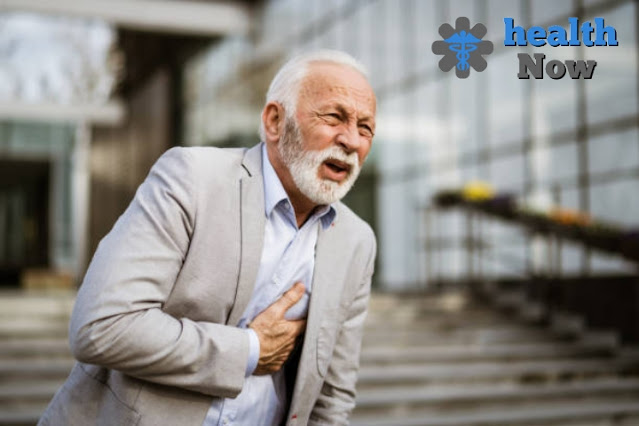What is a heart attack.
heart attack frequently happens when the blood coagulation forestalls the bloodstream in the coronary supply route, the vein that conveys blood to some portion of the heart muscle, which can harm a piece of the heart muscle or even reason its complete obliteration.
Before, heart attacks frequently finished in death. Today, most of the people who have heart failures get by, because of the developing consciousness of the signs and side effects of coronary episodes and the improvement and advancement of medicines.
The overall way of life, the food we eat, the speed of actual work we do, and howe and strains all assume a significant part in respiratory failure recuperation.
A solid way of life may likewise help endlessly forestall a first cardiovascular failure or progressive cardiovascular failure by fewer failure factors that add to limiting the coronary corridors answerable for providing blood to the heart.
the symptoms of a heart attack.
Normal heart attack side effects include:
- Strain, or feeling clogged at the focal point of the chest that goes on for more than a couple of moments.
- It spread to the shoulder, arm, back, or even to the teeth and jaw.
- Chest throbs for expanded periods.
- Nonstop agony in the upper mid-region.
- Tight breath.
- Sweatin.
- The sensation of unavoidable demise.
- Extortion or swooning.
- Queasiness and regurgitating.
Heart attack in ladies can be unique, or heart episode side effects might be lighter than those in men.
Notwithstanding the previously mentioned coronary episode side effects, cardiovascular failure side effects in ladies additionally include:
- ToTormentorndigestion in the upper piece of the midsection.
- Wet skin.
- Dazedness.
- Uncommon or inappropriate weakness.
A similar heart attack doesn't show up in all individuals who have a heart attack and if a similar heart attack side effects don't show up at a similar intensity level in every one of the people who have a heart attack.
Such a large number of heart attacks are not so emotional as those on TV, and certain individuals even have a heart attack without showing heart attack side effects by any means.
A heart attack can happen whenever and anyplace working, during play, during rest time, or during development, and there are heart attacks that happen unexpectedly, yet numerous who have a heart attack give cautioning indications hours, days, or weeks before the assault.
The principal indication of an approaching heart attack might be incessant chest torment that expansions in strength and force while putting forth an actual attempt while subsiding very still, angina happens because of an impermanent and lacking progression of blood to the heart, a condition otherwise called cardiovascular ischemic déficit.
Causes and factors of heart attack risk.
The clinical term alluding to a heart attack is myocardial localized necrosis which means the passing of tissue because of hypoxia, and like some other muscle in the body, the heart muscle needs a consistent and ceaseless stock of blood.
Without blood, heart cells are harmed such that prompts torment or strain. On the off chance that the blood conveyance isn't recharged, heart cells might pass on, in which case scar tissue can frame rather than dynamic heart tissue, Irregular or deficient bloodstream to the heart can upset a possibly lethal heart framework.
The reasons for heart attack are blockages in at least one corridor that give the heart oxygen-rich blood, these veins are called coronary courses and they encompass the heart like the crown, the blockage of conduits happens because of blood clots.
If the coagulation is somewhat enormous, it might impede the circulation system of the supply route, and the condition where coronary supply routes are fixed because of atherosclerosis is called blood vessel sclerosis, and atherosclerosis is one of the main sources of a heart attack.
One of the reasons for an unprecedented heart attack is a fit or suffocation of the coronary vein, which stops the bloodstream from a piece of the heart muscle, and poisons, for example, cocaine can cause such a deadly seizure.
risk factor.
Risk factors that increase clots in the coronary artery include:
- Smoking tobacco.
- Hypertension, over the long haul hypertension, might make harm the courses that supply blood to the heart since it speeds up atherosclerosis.
- Elevated cholesterol or fatty substances in the blood.
- Absence of active work Excess heftiness Very hefty individuals has an especially high level of muscle versus fat.
- pressure.
- Family background of a heart attack.
- Individuals with elevated degrees of Homocysteine and Fibrinogen are bound to foster heart disease.
- Heart attack complications.
- heart attack entanglements for the most part connect with heart harm during a heart attack, such harm can prompt the accompanying issues:
1. Arrhythmia.
Assuming the heart muscle is harmed because of a heart attack, short electrical circuits can shape that lead to aggravation of the heart framework, and some might be too serious to even consider prompting passing.
2. Congestive heart failure.
Cardiovascular tissue harm might be perfect to such an extent that the part that stays recuperated from the heart muscle can't siphon blood from the heart normally and appropriately.
Accordingly, how much blood arrives at various tissues and organs in the body is not exactly ordinary, which can cause windedness, exhaustion, and expansion of the lower legs and feet.
The cardiovascular breakdown might be a transitory issue that consequently recuperates after the heart recuperates inside a couple of days or after long stretches of being damaged by an assault, however, cardiovascular breakdown may likewise be a constant sickness made by critical and long-lasting harm to the heart during a heart attack.
3. cracked heart muscle.
Heart muscle might burst in certain parts that have been debilitated by a cardiovascular failure, making an opening in the heart and frequently prompting fast demise.
4. Harm to heart valves.
If at least one heart valve is harmed during myocardial localized necrosis, the harm might be exacerbated by issues that represent a genuine endanger to life.
Heart attack diagnosis.
In a perfect world, a specialist ought to search for risk factors that might prompt a heart attack during a routine actual assessment.
Assuming individual experiences a heart attack or suspects that they have experienced a heart attack, the crisis ought to be audited and analyzed through the accompanying:
- The clinical staff requests that the patient portray the side effects he has noticed.
- His circulatory strain is estimated notwithstanding heartbeat and temperature.
- It is connected to the heart framework and promptly starts to play out the tests by which it is resolved whether he now has a heart attack.
- ClinicThe clinical pays attention to the heartbeat and the development of air in the lungs by ththroughspecialist's hearing.
- The clinical staff poses inquiries about the patient's clinical history and the historical backdrop of cardiovascular illnesses in his loved ones.
- Clinical trials led by clinical staff assist with deciding if signs and side effects, for example, chest agony or others show a heart attack or different issues. These tests include:
- Cardiogram.
- Blood tests.
- Other tests.
- Assuming in the beyond an individual has experienced a heart attack, or is at present experiencing it, specialists will find prompt ways to address what is happening, and doing the accompanying tests might be fundamental:
- Chest X-beam: permits the specialist to look at the size and state of the cardiovascular.
- Atomic examining: This test distinguishes and finds issues with the binsthetthe ream to the heart.
- Heart Echo Scheme: This sweep utilizes sound waves to create cardiography.
- Catheterization: This test shows whether the coronary supply routes are restricted or obstructed.
- Testing might be expected in the main days or weeks after a heart attack, these tests look at how the cardiovascular answers while putting forth an actual attempt.
Heart attack treatment.
Therapeutic options include:
immediate treatment.
At the point when a heart attack happens, the accompanying advances should be taken right away and immediately:
- Prompt contact for dire clinical help and in any event, when dubious of a cardiovascular failure should be acted right away.
- Take nitroglycerine assuming the specialist has recommended dynamite, and triple glyceryl nitrate is an extended coronary vein drug that ought to be taken as per directions.
- In its most memorable minutes, a heart attack might cause a condition of ventricular fibrillation, i.e., a shaking heart to no end and no end, and untreated ventricular fibrillation quickly prompts unexpected demise.
The utilization of an outside defibrillator that reestablishes the heart to its not unexpected frameworks by electric shock might be a reasonable and fruitful treatment in crises even before the heart attack victim shows up at the hospital.
pharmacotherapy.
Each moment that passes after a heart attack, the number of tissues that don't get the fundamental oxygen normally and consistently increments, making harm or all-out harm and demise.
The primary method for halting harm to the tissue lies in the quick fix of the course, so the blood reestablishes its stream and admittance to different cells, tissues, and organs in the body.
Medications used to treat heart attack include:
- Ibuprofen.
- Blood thinners.
- Clopidogrel.
- Different medications to forestall apoplexy.
- Tranquilizers.
- Nitroglycerin.
- Beta receptor blockers.
- Medications to bring down the degree of cholesterol.
Surgical and other measures.
Notwithstanding drug treatment, one of the accompanying techniques might be expected to treat a heart attack :
- Coronary container: a surgery pointed toward dispensing with tight or obstructed regions in coronary veins whether by the swell or by the stent.
- Different Treatments: Feed the Coronavirus Pass.
Heart attack prevention.
It is never past the point where it is possible to go to endlessly lengths that endlessly forestall a coronary episode and should likewise be possible even after a heart attack, as medication treatment has turned into a vital and fundamental part in diminishing the gamble of a coronary episode, and in aiding and supporting the heart that has been in.
Propensities and ways of life likewise assume a significant part in forestalling hearattacksks keeping them from happening or endlessly recuperating from them. The main techniques for avoidance include:
1. Medicines.
Specialists for the most part exhort drug medicines for individuals who have languished a heart attack or over individuals at high gamble of cardiovascular failure.
Drugs that assist with further developing heart execution or decrease the gamble of a heart attack include:
- Blood thinners that keep it from being uncovered.
- Beta receptor blockers as these medications lessen pulse and circulatory strain, decrease the weight on the heart and assist with forestalling ensuing extra respiratory failures.
- Angiotensin-converting enzyme inhibitors.
- Drugs to lower the level of cholesterol.
2. adjust to a new way of life.
Way of life fundamentally affects the heart so making the accompanying strides will help forestall cardiovascular failures, to, in addition, recuperate from ha earattackssck, including:
- Forgo smoking.
- Evaluating for cholesterol.
- Normal clinical assessments.
- Follow up and keep a sound degree of the pulse.
- Normal actual work.
- Keep up with sound weight.
- Defying and beating pressure and mental strains.
- No Drinking Alcohol.



